How to Make a Terrarium
Image by Flickr / ex.libris
Terrariums are simple to make, easy to care for and the choices for plants and styles of containers are endless.
A terrariums garden is a miniature ecosystem simulating either a dry habitat or a more tropical or woodland setting.
The plants you choose and location of your terrarium will determine what type of habitat it becomes. Succulents such as aloe, agave, and sempervivum work well with cacti for a dry terrarium (or even an open-dish style) in a bright spot. In a cooler location, jungle or rainforest terrariums lend well to ferns and club mosses, as well as miniature flowering plants such as African violets.
Selecting a container for a terrarium
A terrarium or bottle garden is created inside any clear glass container. Condensation forms inside the glass environment, creating precipitation to keep the garden moist.
Variety of glass containers with moss, succulents and ferns. (Flickr / Denise Fasanello) Bell jars, cloches, and Wardian cases are created specifically to host a humid environment, but anything with glass sides will suffice.
You can buy specific terrarium glass containers at hardware stores and garden centres, or you can get creative – use an inverted jam, pickle or pasta-sauce jar, glass or crystal vase, old fish bowl, antique canning jar or apothecary bottle.
Consider a coffee carafe, brandy snifter, wine decanter or even a glass teapot. A completely closed container such as a cookie jar will create an extremely tropical environment while a fish bowl with a large opening is ideal for a dryer desert environment.
The easiest way to create a terrarium display is to simply enclose a potted plant such as an African violet or a orchid in glass.
Hanging terrariums on display at Gastown's Old Faithful Shop in Vancouver. (Image: Old Faithful Shop)
Choosing plants for a terrarium
For a multi-plant display, choose plants that have similar growing requirements for temperature, light and water. Slow growers are also preferred so your terrarium doesn’t get overgrown.
Don’t overcrowd your terrarium; it will have more visual impact and your plants will be healthier if you keep it simple. Ensure there is variety of leaf texture, colour and height. Include a mossy groundcover and something taller such as a lemon button fern.
Potted jade plant in a Wardian case. (Flickr / Rob Ireton ) You will need to consider where you will place your completed terrarium when choosing plants. Do your plants like lots of sun or prefer shade? Placed in direct sunlight, a glass container will magnify the effects of the sun and plants can become scorched.
However, your office desk may not provide enough natural light. Choose plants carefully for the location you have in mind, and pick a spot that assures your plants a reasonable amount of light.
You can also include non-growing elements such as sticks, pinecones, seashells, rocks or even garden gnomes.
Preparing your terrarium supplies
Once you have selected your glass container and plants, you will need to collect your other supplies:
- glass container
- small pebbles (3/8” – ¼”)
- horticultural charcoal
- potting soil
- gardening gloves
- plants
- any objects you’ll include (sticks, seashells, pinecones, et cetera)
Materials to make a terrarium include soil, charcoal, pebbles and plants. (Image: Monica Miller) If your container is secondhand, or was previously used as a terrarium, wash it out. If you decide to disinfect it with a cleaning agent, allow the container to air out for a few days before you plant anything.
I am using a glass fish bowl picked up from a flea market for $10. I scrubbed it with soap and water and allowed it to air dry.
The plants I selected are Echeveria, asparagus fern (not a true fern but a member of the lily family), and an arrowhead vine (Syngonium podophyllum). My apartment gets a lot of natural light and these choices prefer bright light.
My apartment gets a lot of natural light and both the asparagus fern and the arrowhead prefer bright light. The Echeveria is very hardy and will do well as long as I don’t include any groundcover such as club moss which requires a lot of water.
Creating your terrarium
1. When you’re ready to begin, layer the pebbles in the bottom of your container. You need about 2.5 cm (1 in.) of pebbles to buffer plant roots from any water that may pool at the bottom. Without the pebbles, the soil would become muddy very quickly.
Creating bell jar and cloche terrariums. (Flickr / Amy Gizienski) 2. Next, sprinkle the activated charcoal over top. The charcoal acts as a filter for the water that will gather due to the humidity. The condensation can lead to mould and bacteria growth as well.
3. Put some of your sterilized potting soil into the container. Do not use soil from an outdoor garden as it may contain bacteria or fungi that will flourish in the humid environment. Put several inches of soil into the container – enough to cover the roots of your plants.
4. Now you’re ready to arrange your plants. Remember that less is more – don’t crowd your terrarium. Your plants need room to breath and grow and simple arrangements are more pleasing to the eye.
My completed fishbowl terrarium. (Image: Monica Miller)
5. Once you’ve decided where to situate each plant in the terrarium, gently work them out of their plastic pots and carefully tease out the roots of any that appear to be rootbound. 6. When you plant your arrangement, ensure the roots are well away from the sides of the container. There should be a thick layer of dirt between the roots and the glass.
7. Give your plants a drink by drizzling a little water down the side of the container or using a spray bottle to mist the terrarium. Cover the terrarium (if it has a lid) and place it in a light-appropriate area. You’ll want to watch the plants carefully for a few days to ensure they do not dry out as they re-establish their roots.
Moss terrariums. (Flickr / huk_flickr ) Maintaining your terrarium
Terrariums are extremely easy to maintain, which is a huge part of the appeal.
Overwatering is the most common mistake, especially in completely closed terrariums. With my fish-bowl arrangement, I shouldn’t have to provide more than a few tablespoons of water each month. However, a terrarium with moss may dry out quickly (moss is very thirsty).
Moss terrarium in a glass-sided pyramid dish with a lid. (Flickr / vintagecat ) If you have any quick-growing plants, regularly pinch them back or remove dead or damaged leaves.
If some plants do not thrive, try other choices, or make a completely new terrarium by reusing the glass container.


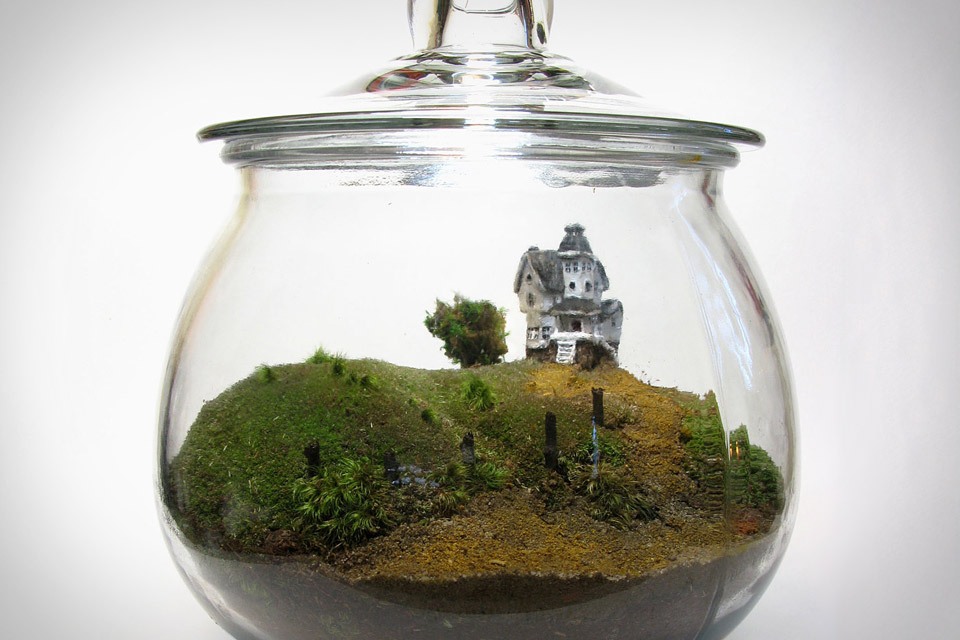
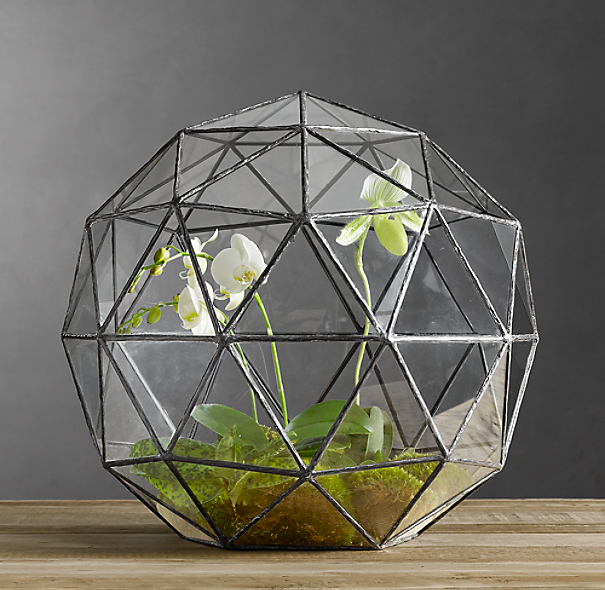






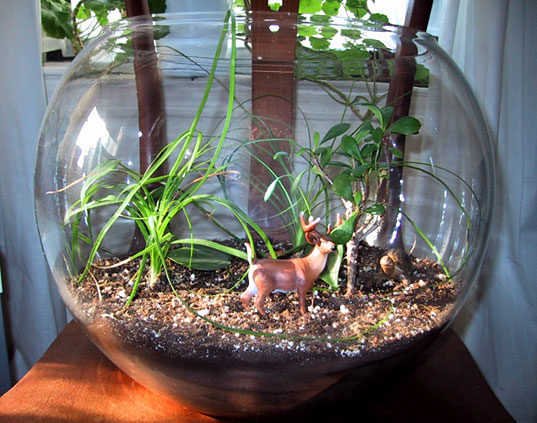



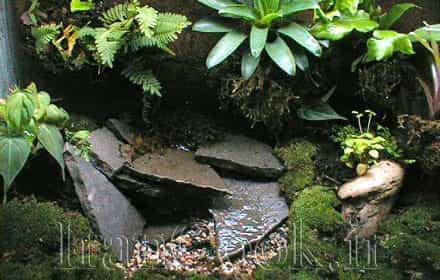

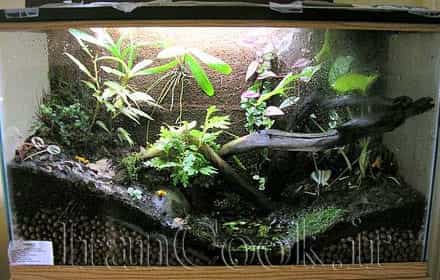
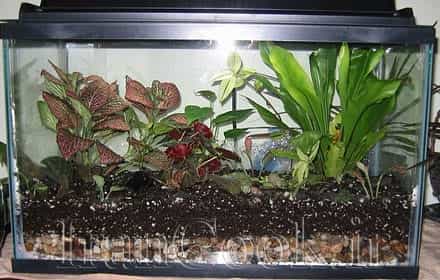
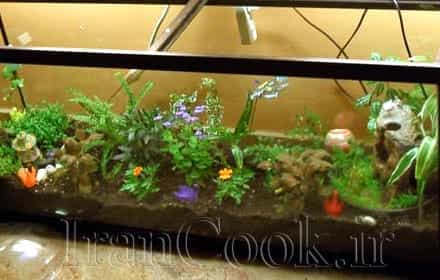
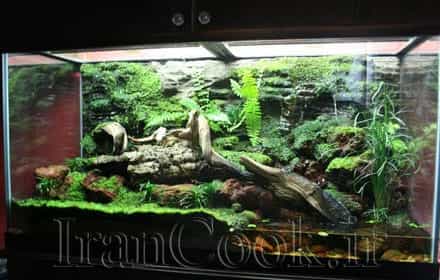


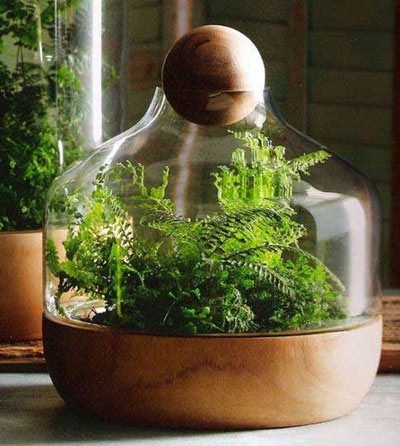
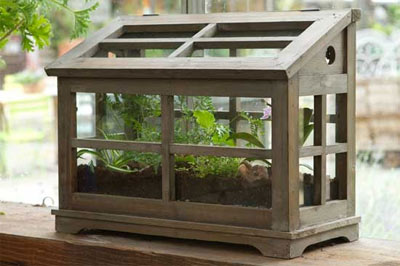

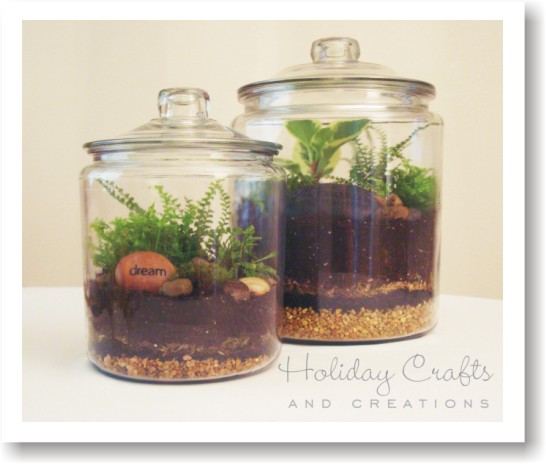
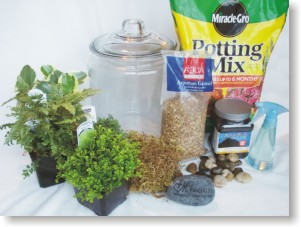



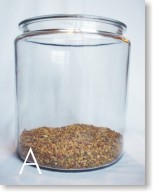

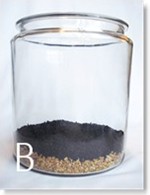

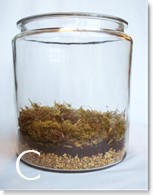

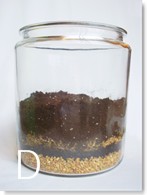

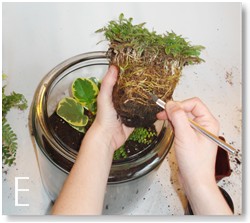
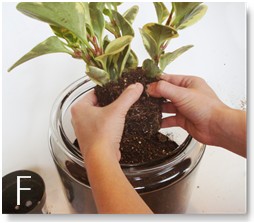

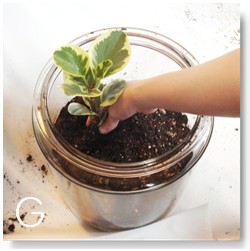

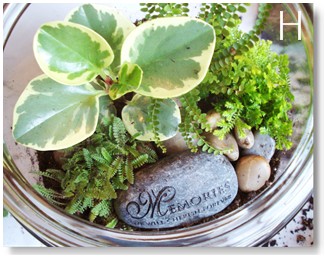

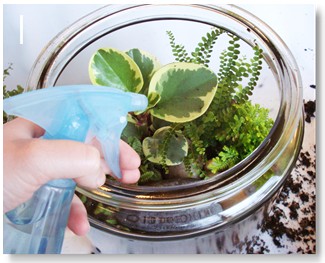
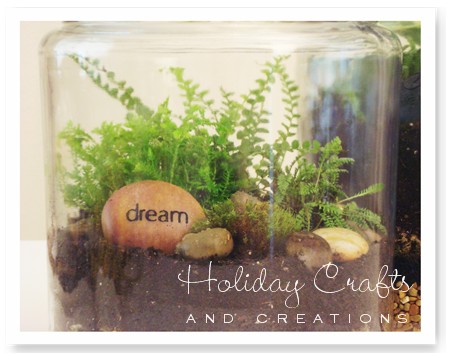











 حالت خطی
حالت خطی

